-
Posts
81 -
Joined
-
Last visited
Content Type
Profiles
Forums
Articles
Gallery
Downloads
Events
Posts posted by LeMarechal
-
-
HI Anvil, you're absolutely right

Yesterday I found that I got a problem to hold the right temperature. On the stem of the roses everything works fine, because the material is still longer at "blackening-temperature", because of its big amount of material. The stem was matte black and not sticky as you discribed above. Oki doki so far...
However the petals are from 1,5mmm sheet metal and thus they have only a little mass. It doesn't matter how hot I'm starting, it seemed that everything cools down faster than the blackening effect occurs. If I heated up the petals again , carefully with my torch with a very low flame, I ended up with a crusty glancy finish looks like plastic

May it be, that blackening is not the best choice for this project

-
Hi Anvil,
thank you for answering.
I tried it out now and yes I got a nice dark brown/black colour. But I also got a thick glossy film on the surface, not sticky but hard like laquer.
I´m sure I that I applied to much of the BLO/Turp Mix. Therefore I tried it out once more today. I attempted to wipe only thin layers on the metal and that seemed to produce better results. But this rubbing with denaturated alcohol didn´t change anything. Am I yet to hot(not me but the metal
 ) during I´m applying the liquid? Or is it still to thick?
) during I´m applying the liquid? Or is it still to thick?
1000 Questions I know

Greetings Sascha
-
Anvil, do you have some example pictures???
-
Anvil,
Ok thank you, that makes things clearer.
Lacquer is a fine thing, but the most products I know become very hard after drying what makes it very possible to get spallings and scratches. Another problem what I'm seeing with lacquer is that the most lacquers need minimum rounded edges, to cover them well. On sharp edges like at the rose petals, lacquer will flow away a little, so that maybe a door for rust... ok, probably not the biggest problem for interiors:)
But this scratch and spalling thing is ugly, even on clear coatings. Think the good old oil/wax- method has its advantages here...
-
Hi to all,
thank you so much for all the good ideas!!!
I think these two last ideas with BLO or WAX aplied to the warmed roses will be, what I´ll try first.
Anvil -
You describe that cleaning with alcohol step. What is the reason for this? Wouldn´t that rub of the coating I have just put on?
And at least, if you say "buffing" you mean buffing by hand with a piece of rag or so and not excessiv work with a buffing wheel?
Greeting Sascha
-
Hi to all out there,
just making twenty of these steel-roses. However, the more I'm comming to the end of the job, the more I'm asking myself, what kind of coating is the best and how to apply.
I got a very nice beeswax/carnauba mix here. But how should I wipe of excesse material between the petals? Or should I use a lacquer coating. But how to apply this, between the petals to prevent rusting there?
What would you recommend?
-
Yes that's right! He makes very fine tool and it is difficult not to get into a shopping spree :) ...
The original hammerhandle is a round and massive one. Even though I got very big hands I don't like big and round handels. But, you know, after paying all the money I felt a little unhappy to touch my new toy with my farrier rasp so far...
But yesterday ,time of protection ended and I reached out for my rasp and gave it a few strokes here and there. I like a little thinner handels of a more rectangular style and I was suprised how the feeling changed after that little corrections.
Now the hammer is much more comfortable and I will try it further a while and come back here...
Ok, that the handel should fit the individual blacksmith's hand are not the latest news but it seems that sometimes one have to rediscover long known things

Sascha
-
-
Hi Pnut,
Thank you very much for your thoughts.
Before I'll write anything more,I like to point out, that I definitely do not want to say anything bad about Brent and his work!
I'm only searching for other people and their experiences with these hammers...
Pnut I agree with you with all you wrote. Meanwhile it seems to me that such weighted hammers aren't useful for peening.
Even though I noticed the boosting effect during moving the hot metal, the hammer feels surprisingly heavy in my hand.
I have another 3.2lbs hammer, a balanced rounding hammer like (Brian Brazeal) wich feels much "lighter" and moves the hot steel similary fast and aggressively.
I'll take a photo these days
Greetings Sascha
-
Hi folks,
I bought a very nice hammer from Brent Bailey. It's one of these Aspery modified types.
This is a weighted hammer, meaning that the handel is not in tye center of the hammerhead. The faced side is much longer than the crosspeen side. It's a little bit like a japanese hammer.
Personally I'm feeling a little uncomfortable with its crosspeen side. It feels very difficult to control this boy during hammering.
My question is if anybody else have sone experience with it?
Greetings Sascha
-
He to all you blacksmiths out there

how do you get of scale if you have a complex shaped workpiece?
For example let´s say you make a forged rose and after shaping the petals with an oxy/fuel-system you will stay there with scale on all your beautiful shaped rosepetals.
How would you clean up this?
Hope you understand what I mean despite my bad english

Greetings from Germany
Sascha
-
-
Hi to all of you,
let me thank you for all these helpfully tips. Yes the backingsoda works fine. I got some white vinegar 10% from a foodstore here, let the pieces some hours soak and then place it in the backingsoda solution. No Rust!!!
After wiping off the BS-solution I went to my big wheel wire brush and remove the loose rest of the scale. So I got very silvery and shiny, surfaces. I noticed, that the pieces will rust(on air) after a while if I didn´t wire brushed them. The other pieces, wich I brushed to silver :) did not rust until now (3-4 days).
I experimented a little with oxidation/no oxidation. So I got some nice coloring by putting the pieces back in the acid after!!! I wire brushed the things to this silvery shine. Only for short and with no wiping off the liquid. Let it air dry and look what happens...
Greetings
Sascha
-
Ok, thanks to both of you for that explanations.
I'm wondering a littel why that "vinegared" metal is so susceptible to rust?
-
Hey out there,
I don't know where I got the tipp to remove the scale by sticking the pieces in a pot with white vinegar for a while.
I tried it and it works. Thw most of the scale disappeared and the rest can easily be removed by wirebrushing. Very usefull on complicated works.
However I got problems with quick comming up of rust. Even after brushing.
After the acid bath in the vinegar I lay the parts into a tub with clean water, then brush it and after a few minutes I got rusty surfaces.
What did I wrong

-
-
Thank you all for your responses,
my firepot is about 8" wide and 11" long, but only 2" deep. Lenght and width seems to be ok for my projects. i`m usually working with stocks 1" to 1,5".
2" in thickness is a seldom thing. I´m not thinking about working with heavyer stock in the next time because:
The products I want to produce for the moment must all be portable by hand, hope this describtion make sense. I want to sell this things on christmas markets. So everything must not be to big and heavy.
That´s what I need my firepot for...
Well, my coalfire is working well i.e. get all stuff heated up in an adequately time. But I´m just wondering if I can improve it...
BTW... what do you think are the marks for a not deep enough fire?
Greetings Sascha
-
Hi to all the blacksmiths out there,
is there a rule of thumb how deep a firepot or a fire(coal) should be to get the three zones in a fire? With the three zones I mean, oxydizing, neutral and reducing zone...
Greetings
Sascha
-
33 minutes ago, Steve Sells said:
.... did you read the pinned posts on heat treating?
Hi Steve,
yes I searched there for notes on case hardening, may be that I´ve overlooked something.
I am knowing about the general correlations between hardening, tempering(colours) and the danger of inproperly heatreatment - in relation to tool steel.
But this thing with case hardening, especially with case hardening compounds like Kasenit, is realy new to me. I´ve red somwhere that the thickness of the hardened layer is only a fraction of a milimeter, more like a hard coating (case hardening mild steel). And so I asked for tempering because I never heard anything about it in relation to case hardening, using compounds.
PS: If I´m using aloyed tool steel I don´t touch it without privious reading the product data sheets of the manufacturer.
-
Thank you all for your comments!!!
@JohnB,
ok, then I will try not searching difficulties where things are easy
 (hope this joke works in english).
(hope this joke works in english).
You know, in much cases there is something that sounds very simple an easy, and if you try it out you will see a lot of these little things you have to know, in order to be successful. And so I was a little distrustful....

But now I´m a bit smarter.
Because of the low thickness of the hardened surface, tempering is not an issue... right?
Greetings and thanks once more
Sascha
-
Hi Thomas,
thanks for the tip. I´ll try to find a copy soon.
I found here an case hardening compound that seems very similar to Kasenit. There is only a very short -how to- on its packaging.
Something like: Apply at red heat, wait a little and then take once more to a heat, then quench.
Ok, if it´s just how it is then I´m ok with it :)
But I can´t believe that things are so simple???
What I like to do with it is to surfaceharden some easy tools like leaf crimping stakes or hardy swages with simple shapes.
I wonder if I have to keep the piece at redheat for a while after applying the compound. Because After strewing the poder on
there is a crust on the piece and the longer I keep it at red heat temperature the crust disappears gradually. Is that good? If yes, how long should I wait befor quenching?
You see realy basic questions :)
Greetings
Sascha
-
Hi to all the blacksmiths out there,
got one or two little questions about case hardening and I hope someone can give me some enlightenment

I´ve heard that there should be a loud cracking sound if you make the final cooling in water. Ok, sometimes I got it, sometimes not. From what does this cracking sound depend on? And is it important for getting good results?
Usual heattreatment needs different tempering, depending on what is the final use of the work. If it comes to case hardening is tempering necessary too, in that case(pardon the pun)?
And finaly:
what is the right way for case hardening?
Polishing the piece/ red heating /applying the case hardening powder.. and then???
Greetings from Germany
Sascha
-
-
I will try to get some photos of my forge today.
Glenn, that were exactly this points I would like to get more information about.
Thank you very much.
If I came to other blacksmiths or some demonstrations I tried to catch skills about how to manage a fire in real life. But on hammerins it is a little confusing to see how the others work their fire because, like Thomas explained above, for demonstrations you need an other kind of firemanagment than at home, if you're alone.
On the other hand it must be said, that you can see some very absurd things on meetings. Once I met an experienced smith and he had a forge with a very flat firepot and nearly no coal in it, supplied with far to much air, he called this a "nice"sharp and fast fire. Everything he was working on during his demonstration burned and he got excessive scale... but he was happy with that- I was very irritated after that meeting


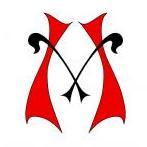
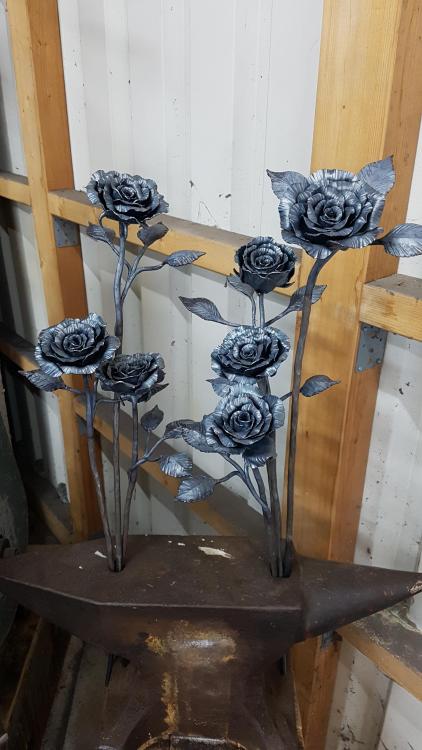
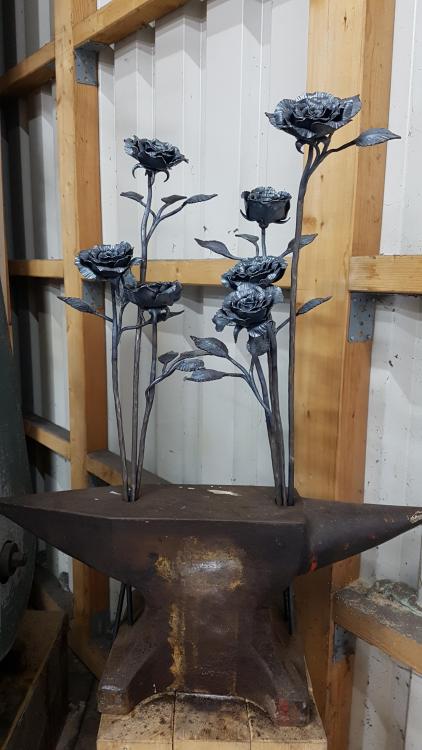
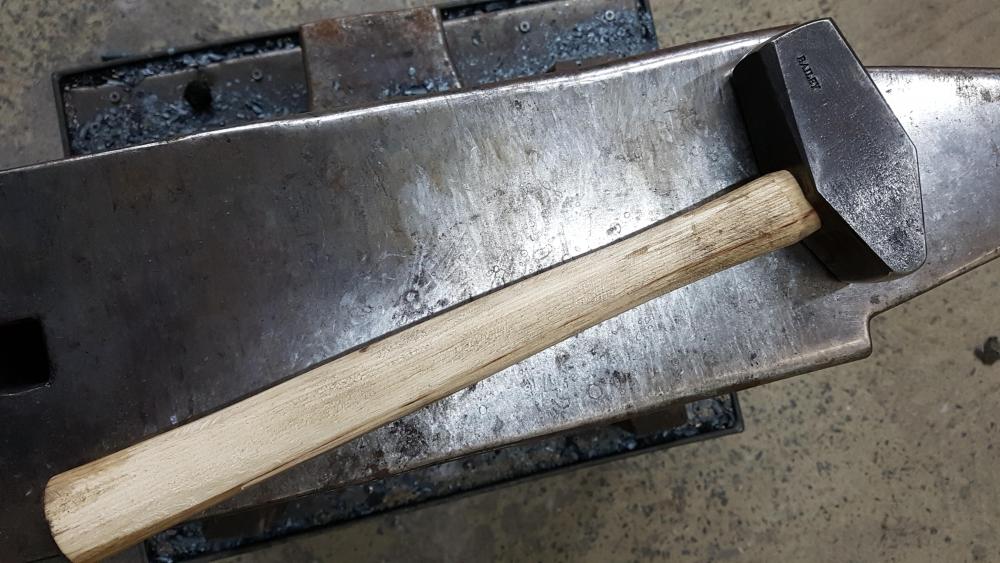
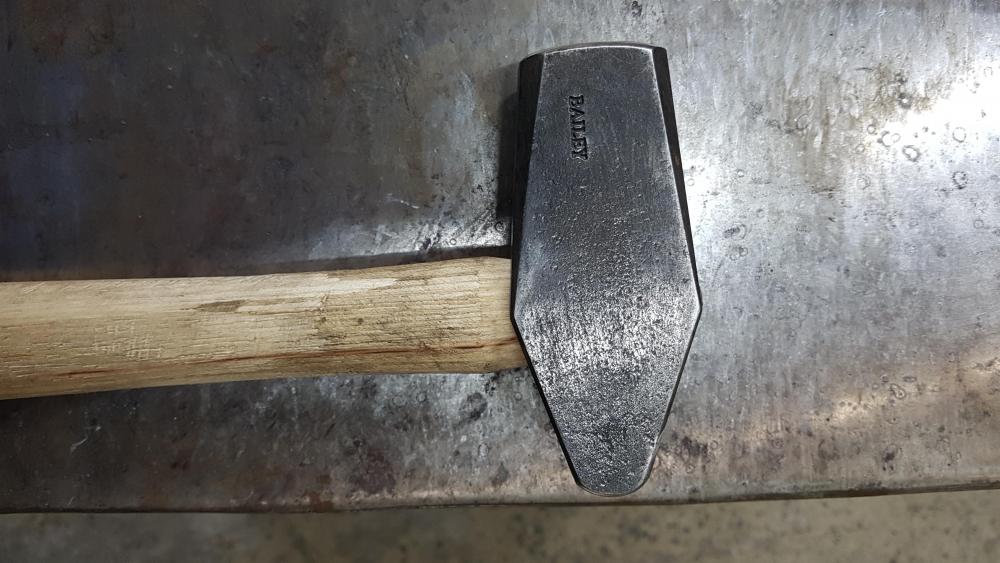
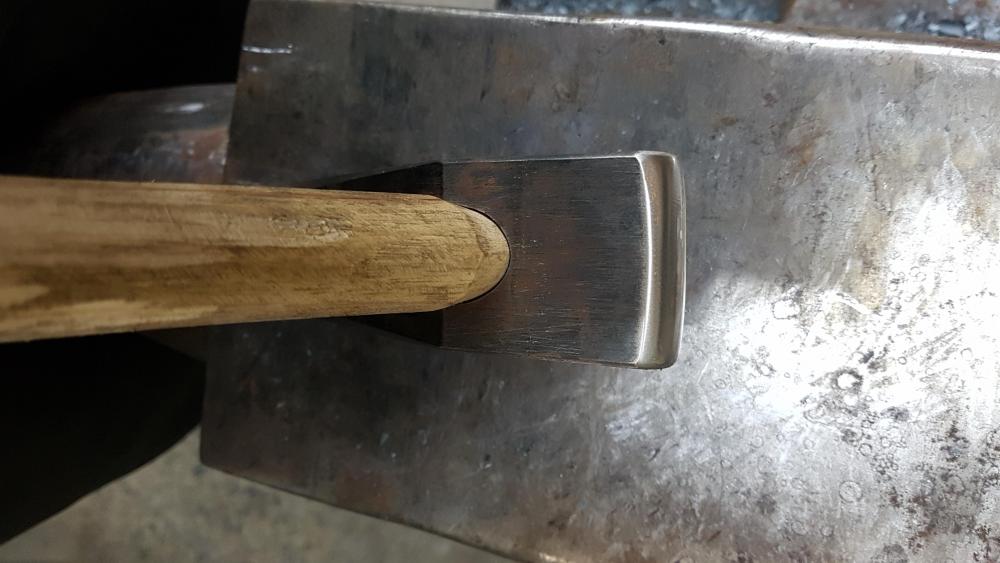
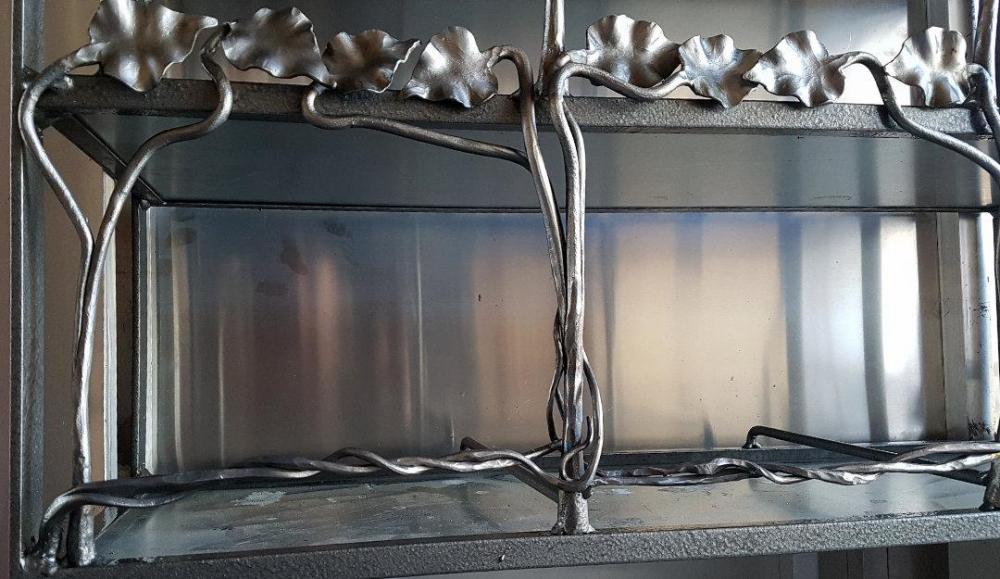
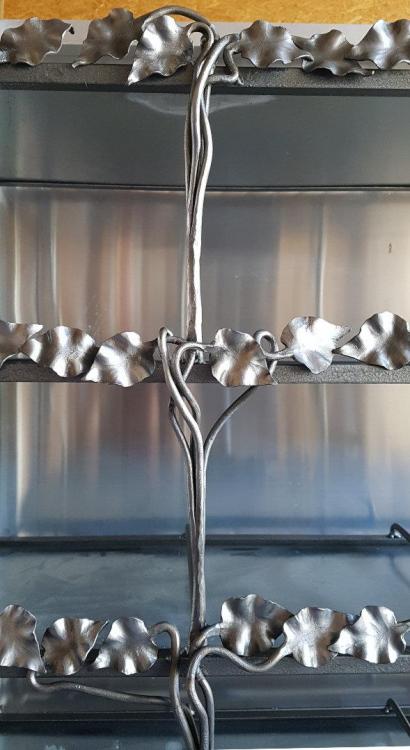
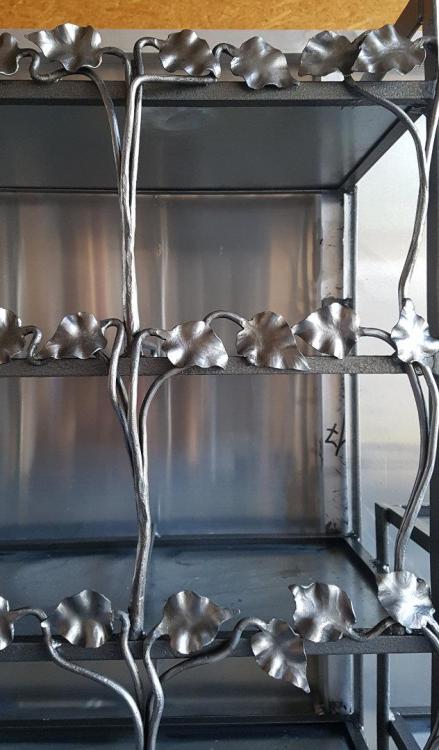
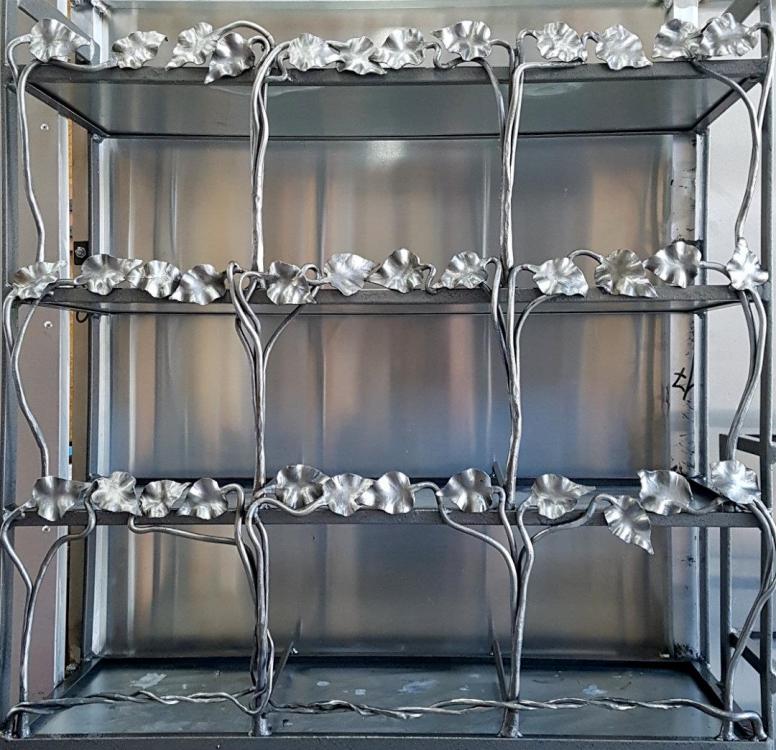

![IMG-20190522-WA0006[1].jpeg](https://www.iforgeiron.com/uploads/monthly_2019_05/1680793302_IMG-20190522-WA00061.thumb.jpeg.e961d9c5a1cdd2da0065c5efbdb6a5dc.jpeg)
![IMG-20190522-WA0007[1].jpeg](https://www.iforgeiron.com/uploads/monthly_2019_05/1965759099_IMG-20190522-WA00071.thumb.jpeg.a28fd87769ee62e7ca6da54769c1eb9f.jpeg)
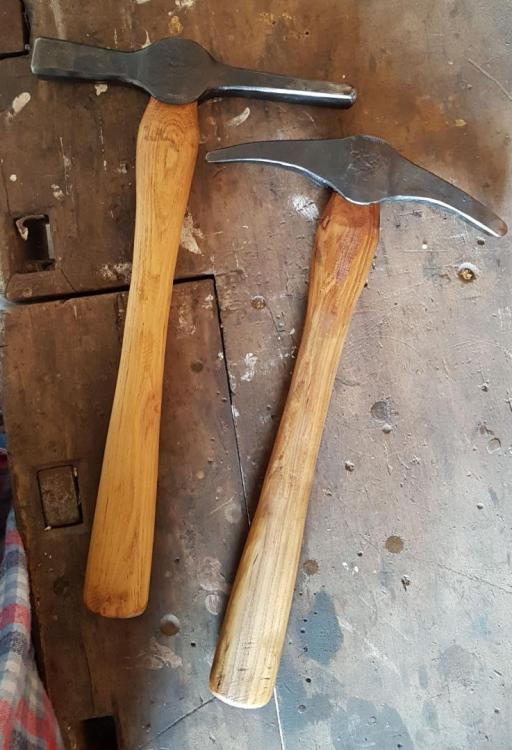
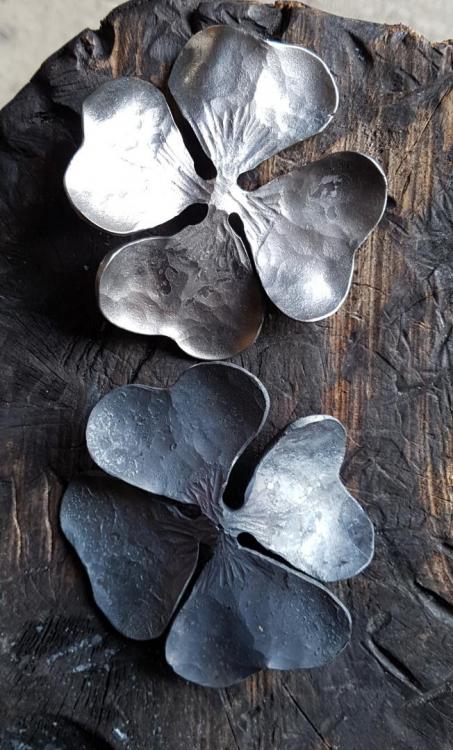
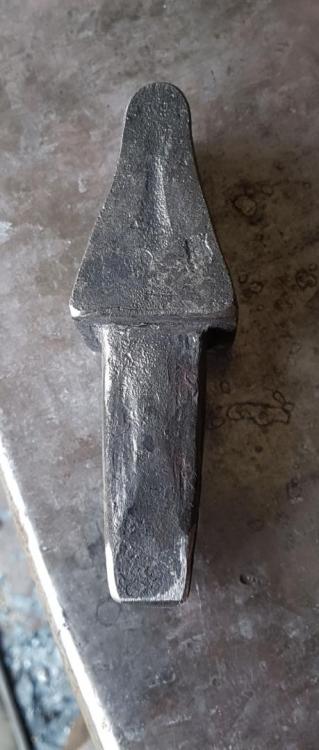
Which kind of coating for this
in Finishes for Metal
Posted
Hi Anvil,
First of all I like to thank you for your endless patience for answering all these details.
I guess you're right. I just have to get more experience with this technique particularly with such tricky items like these roses petals.
As I posted earlier, with simple objects everthing works easy and fine.
What I also really wanted to ask, if you clean up your pieces with alcohol, do you have any "dirt" in your cleaning rag? When I put alcohol on a new and clean piece of some rag and rubb the piece the rag still stays clean. Shouldn't I have at least a little black stuff in my cloth?
Greetings and once more thanks